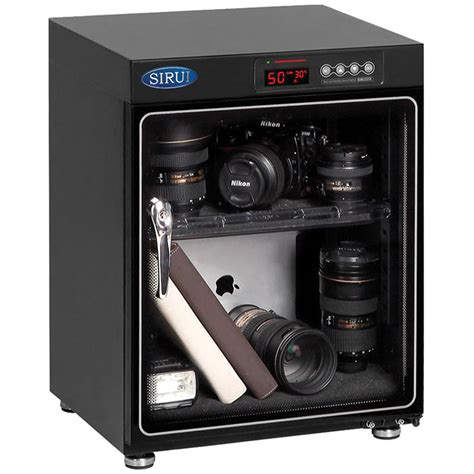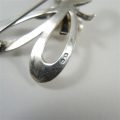Humidity’s Impact on Electronics: A Comprehensive Guide
What is humidity and how does it affect electronics?
Humidity refers to the amount of moisture present in the air. It’s a critical factor when it comes to the longevity and performance of electronic devices. While some moisture is naturally present in the air, excessive humidity can wreak havoc on electronics, causing various issues.
Excess moisture can lead to:
- Corrosion: Moisture promotes the formation of rust and corrosion on metal parts, particularly on electrical connectors and internal components. This can disrupt electrical flow and eventually lead to device failure.
- Short Circuits: Water or moisture can create conductive pathways between components, causing short circuits. These short circuits can damage sensitive electronic circuitry and even lead to fires.
- Component Degradation: Humidity can accelerate the deterioration of electronic components, such as capacitors, resistors, and integrated circuits. This can result in decreased performance, reduced lifespan, and ultimately, device failure.
- Mold Growth: High humidity creates a conducive environment for mold growth, which can damage electronic components and circuitry.
In contrast, low humidity levels can also be detrimental. Dry air can lead to static electricity buildup, which can discharge and damage sensitive electronic components. This is particularly common in environments with low humidity, such as during the winter months.
It’s essential to understand the impact of humidity on electronics and take necessary precautions to protect your devices from its adverse effects. Maintaining proper humidity levels is crucial for the longevity and performance of electronics.
What are the ideal humidity levels for electronics?
The ideal humidity levels for electronics vary depending on the type of device and its intended use. However, a general guideline is to maintain relative humidity (RH) levels between 40% and 60% for most electronic devices. This range minimizes the risks of moisture-related issues while avoiding excessive dryness.
Here’s a breakdown of ideal humidity ranges for different types of electronics:
| Type of Electronics | Ideal Humidity Range (RH) |
|---|---|
| Servers and Data Centers | 40-55% |
| Consumer Electronics (TVs, Smartphones, Laptops) | 40-60% |
| Industrial Equipment | 30-65% (may vary depending on specific requirements) |
| Medical Devices | 30-55% (stricter regulations apply) |
It’s important to note that these are general guidelines, and specific electronic devices may have different recommendations. Refer to the manufacturer’s instructions or specifications for the optimal humidity range for your particular equipment.
In addition to maintaining ideal humidity levels, it’s crucial to store electronics in dry and well-ventilated areas to minimize the risk of condensation. Avoid storing electronics in damp environments, such as basements, garages, or bathrooms, as these areas are prone to high humidity levels.
How can I measure humidity levels?
Measuring humidity levels is essential for ensuring the optimal operating environment for your electronics. You can use various tools and methods to measure humidity.
The most common and convenient method is using a hygrometer. Hygrometers are relatively inexpensive devices that provide a direct reading of the relative humidity in the surrounding air. They are available in various forms, including:
- Analog Hygrometers: These hygrometers use a needle to indicate the humidity level on a dial. They are simple and affordable but may not be as precise as digital models.
- Digital Hygrometers: Digital hygrometers display humidity readings digitally on an LCD screen. They are generally more accurate than analog models and often include additional features, such as temperature readings and data logging capabilities.
- Wireless Hygrometers: Wireless hygrometers allow you to monitor humidity levels remotely using a smartphone or tablet app. This can be particularly useful for larger areas, such as data centers, where it’s impractical to monitor humidity levels manually.
In addition to hygrometers, other tools and methods can be used to measure humidity:
- Hair Hygrometer: This method uses the principle of hair’s sensitivity to humidity changes. As humidity increases, the hair absorbs moisture and expands, moving a pointer on a scale.
- Psychrometer: This method uses two thermometers, one dry and one wet. The difference in readings between the two thermometers indicates the relative humidity. This method is more accurate but requires manual calculations to determine humidity levels.
- Dew Point Meter: This device measures the temperature at which water vapor in the air begins to condense. This measurement can be used to calculate relative humidity.
Choosing the most suitable method for measuring humidity depends on your specific requirements and budget. For most home and office environments, a digital hygrometer is a convenient and affordable option.
How can I control humidity levels for electronics?
Once you’ve measured the humidity levels in your environment, the next step is to control them to maintain an optimal range for your electronics. Several methods can be employed to control humidity levels:
1. Dehumidifiers: Dehumidifiers are effective in removing excess moisture from the air. They work by drawing in moist air, cooling it, and condensing the moisture into a container. Choose a dehumidifier with the appropriate capacity for your environment and monitor the relative humidity levels regularly.
2. Humidifiers: In environments with low humidity, you can use a humidifier to add moisture to the air. Humidifiers work by evaporating water into the air. There are various types of humidifiers available, including cool-mist, warm-mist, and ultrasonic humidifiers. Choose a humidifier based on your preferences and the specific needs of your electronics.
3. Ventilation: Proper ventilation is crucial for controlling humidity levels. Open windows and doors to allow fresh air to circulate, especially in areas with high humidity. Make sure that your electronic equipment is placed in well-ventilated areas to prevent moisture buildup.
4. Desiccant Packs: Desiccant packs are small packets filled with a drying agent that absorbs moisture from the air. These packs are commonly used for storing electronics and sensitive equipment in storage or transit. They are also effective for reducing humidity levels in small spaces.
5. Air Conditioning: Air conditioners can effectively remove humidity from the air while cooling the environment. Air conditioning units with built-in dehumidification features are particularly useful for controlling humidity levels.
6. Insulation: Insulating your home or office can help prevent moisture buildup and maintain a stable humidity level. Properly insulating walls, roofs, and windows can reduce the amount of moisture that enters the environment.
What are some tips for protecting electronics from humidity?
In addition to controlling humidity levels, several tips can help protect your electronics from moisture damage:
- Store Electronics in Dry Environments: Avoid storing electronics in damp or humid areas, such as basements, garages, or bathrooms. These areas are prone to moisture buildup and can significantly increase the risk of damage. Choose a dry, well-ventilated storage space for your electronics.
- Use Desiccant Packs: Desiccant packs absorb moisture and help prevent condensation inside storage containers or boxes. Place desiccant packs in with your electronics to help maintain a dry environment.
- Keep Electronics Dry After Cleaning: If you need to clean your electronics, make sure they are completely dry before storing them or turning them on. Any remaining moisture can lead to damage.
- Use Protective Cases and Covers: Protective cases and covers can help prevent dust, moisture, and other environmental factors from damaging your electronics. Use protective cases for smartphones, tablets, and other devices when not in use.
- Avoid Exposing Electronics to Extreme Temperature Fluctuations: Sudden changes in temperature can cause condensation to form on electronic components. Avoid exposing electronics to extreme temperature fluctuations to prevent moisture buildup.
- Regularly Inspect Electronics for Signs of Damage: Inspect your electronics regularly for signs of moisture damage, such as corrosion, mold, or water stains. Address any issues promptly to prevent further damage.
Following these tips can significantly reduce the risk of humidity-related damage to your electronic devices and extend their lifespan.
How can I prevent condensation on electronics?
Condensation occurs when warm, humid air comes into contact with a cold surface. This can happen when you move electronics from a warm environment to a colder one, such as bringing your smartphone outside on a cold day. Condensation can damage sensitive electronic components, leading to malfunctions or permanent damage.
Here are some ways to prevent condensation on electronics:
- Gradually Acclimate Electronics: Avoid sudden changes in temperature. When moving electronics from a warm environment to a colder one, allow them to acclimate gradually to the new temperature. This will help prevent condensation from forming.
- Use Desiccant Packs: Desiccant packs absorb moisture and help prevent condensation inside storage containers or boxes. Place desiccant packs in with your electronics to help maintain a dry environment.
- Keep Electronics Dry After Cleaning: If you need to clean your electronics, make sure they are completely dry before storing them or turning them on. Any remaining moisture can lead to damage.
- Use Protective Cases and Covers: Protective cases and covers can help prevent dust, moisture, and other environmental factors from damaging your electronics. Use protective cases for smartphones, tablets, and other devices when not in use.
- Avoid Exposing Electronics to Extreme Temperature Fluctuations: Sudden changes in temperature can cause condensation to form on electronic components. Avoid exposing electronics to extreme temperature fluctuations to prevent moisture buildup.
Is humidity a concern for electronics in storage?
Yes, humidity is a significant concern for electronics in storage. High humidity levels can accelerate the degradation of electronic components, leading to corrosion, mold growth, and other issues. Proper storage conditions are crucial for preserving the lifespan and functionality of electronic devices.
Here are some tips for storing electronics in humid environments:
- Store Electronics in a Dry and Well-Ventilated Environment: Avoid storing electronics in damp or humid areas, such as basements, garages, or bathrooms. Choose a dry, well-ventilated storage space that is not prone to moisture buildup.
- Use Desiccant Packs: Desiccant packs absorb moisture and help prevent condensation inside storage containers or boxes. Place desiccant packs in with your electronics to help maintain a dry environment.
- Use Airtight Containers: Storing electronics in airtight containers can help protect them from moisture. Make sure the containers are clean and dry before storing the electronics.
- Regularly Inspect Electronics: Inspect your electronics regularly for signs of moisture damage, such as corrosion, mold, or water stains. Address any issues promptly to prevent further damage.
Proper storage practices are crucial for protecting electronics from humidity-related damage and ensuring their long-term functionality.
What are the long-term effects of humidity on electronics?
Prolonged exposure to high humidity can have severe long-term effects on electronics, ultimately leading to device failure. Here are some of the long-term effects:
- Corrosion: Over time, moisture can cause corrosion on metal parts, such as connectors, contacts, and internal components. This corrosion disrupts electrical flow, reduces conductivity, and can eventually lead to circuit failure.
- Component Degradation: High humidity accelerates the degradation of electronic components, such as capacitors, resistors, and integrated circuits. This can result in decreased performance, reduced lifespan, and ultimately, device failure.
- Mold Growth: In humid environments, mold can grow on electronic components and circuitry. Mold can cause electrical shorts, component failures, and even fire hazards.
- Reduced Lifespan: The combined effects of corrosion, component degradation, and mold growth significantly reduce the lifespan of electronic devices.
To mitigate these long-term effects, it’s crucial to address humidity issues promptly. Monitoring humidity levels, implementing humidity control measures, and storing electronics in dry environments are essential for protecting them from long-term damage.
Is there anything else I should know about humidity and electronics?
Here are some additional points to consider regarding humidity and electronics:
- Temperature and Humidity: Temperature and humidity work together to impact electronics. High temperatures can exacerbate the effects of humidity, increasing the rate of corrosion and component degradation.
- Static Electricity: Low humidity can increase the risk of static electricity buildup, which can damage sensitive electronic components. This is especially important for devices with delicate internal circuitry.
- Manufacturer’s Recommendations: Always refer to the manufacturer’s instructions or specifications for your specific electronics. They may have specific humidity recommendations or guidelines for storage and operation.
- Industry Standards: Certain industries, such as healthcare and aerospace, have strict humidity standards for their electronics. Meeting these standards is crucial for maintaining the integrity and functionality of equipment.
Table Summary
| Factor | Ideal Range | Effects of Excess Humidity | Effects of Low Humidity | Control Methods |
|---|---|---|---|---|
| Humidity (RH) | 40-60% | Corrosion, short circuits, component degradation, mold growth | Static electricity buildup | Dehumidifiers, humidifiers, ventilation, desiccant packs, air conditioning, insulation |
| Temperature | Varies by device | Accelerates corrosion and degradation | Can lead to static electricity buildup | Temperature control systems, insulation |
Frequently Asked Questions
What are the signs of humidity damage to electronics?
Signs of humidity damage to electronics include:
- Corrosion on metal parts, such as connectors and contacts
- Mold growth on components or circuitry
- Water stains or discoloration
- Strange noises or odors
- Device malfunctions or intermittent operation
Can I fix electronics damaged by humidity?
In some cases, humidity-damaged electronics can be repaired. If the damage is minor, such as corrosion on connectors, it may be possible to clean and restore the components. However, if the damage is severe, such as component failure or mold growth, repair may not be possible.
How long does it take for humidity to damage electronics?
The time it takes for humidity to damage electronics varies depending on the severity of the humidity level and the type of electronic device. High humidity levels can cause damage in a matter of days or weeks, while lower humidity levels may take months or years to cause noticeable problems.
Should I keep electronics in the bathroom?
No, it’s not advisable to keep electronics in the bathroom. Bathrooms are typically humid environments due to steam from showers and baths. Prolonged exposure to high humidity in the bathroom can damage electronic devices.
Can I use a hair dryer to dry electronics?
It’s not recommended to use a hair dryer to dry electronics. The heat from a hair dryer can further damage delicate electronic components.
What should I do if I drop an electronic device in water?
If you drop an electronic device in water, immediately remove it from the water and disconnect any power sources. Do not try to turn it on. If possible, dry the device with a soft cloth and allow it to air dry for several days. Consider taking the device to a professional repair service for inspection and repair.
How often should I check my electronics for humidity damage?
It’s a good idea to check your electronics for humidity damage at least once a month. If you live in a humid environment, you may need to check more frequently.


